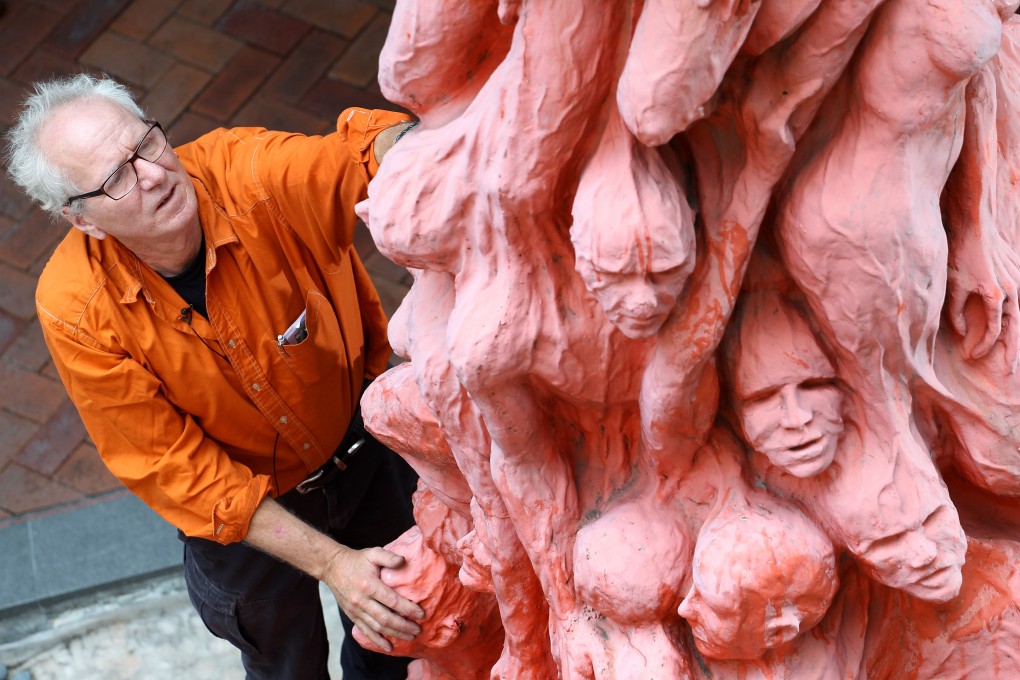Hong Kong security chief slams ‘artistic creations’ used as guise to endanger national security, does not confirm if Pillar of Shame sculptor is wanted
- Security minister Chris Tang’s letter revealed by Danish artist Jens Galschiot, who created piece marking Tiananmen Square crackdown
- Galschiot, based in Denmark, had written to city authorities seeking clarification on an arrest warrant for him as reported by Chinese media

Hong Kong’s security chief has slammed what he says is a common tactic of using “artistic creations” to endanger national security, but has stopped short of confirming whether a Danish sculptor is on a wanted list.
Secretary for Security Chris Tang Ping-keung made the comments in a letter disclosed to the media by Danish artist Jens Galschiot, who created the Pillar of Shame piece marking the 1989 Tiananmen Square crackdown.
Galschiot had earlier this month written to local authorities seeking clarification on whether national security police had an arrest warrant out on him as reported by a Chinese-language media outlet.
“In order not to prejudice the effectiveness of any law enforcement action that may be taken, the police will not respond to any inquiry in relation to individual cases,” Tang wrote in a letter dated on Monday and disclosed by Galschiot.
The Pillar of Shame, previously located at the Kadoorie Centre in Yuen Long, an agricultural research facility run by the University of Hong Kong (HKU), was in May seized by police over a subversion case.
Tang said the city “will not hesitate” when it came to bringing to justice any person who had violated national security, pointing to the force’s earlier move to place a HK$1 million (US$127,600) bounty for each arrest of eight Hong Kong activists based overseas and wanted for alleged breaches of the law.
“It is a common modus operandi of those seeking to endanger national security to engage in such acts and activities under the pretexts of ‘peaceful advocacy’, ‘artistic creations’ and so forth,” he warned.
